The year 2021 was a lucky one for the process of critical rediscovery of 18th-century Tuscan art. The real protagonist was the major exhibition Giovanni Antonio Cybei and his time held in Carrara from July to August 2021, which gave back to art history one of its most important authors on Tuscan soil, with analysis of the context in which Cybei moved, his masters, acquaintances, pupils and painters of his time. But lovers of the eighteenth century have something to be happy about, because in addition to the masterful Carraresi exhibition another stage has been added to the path of appreciation and understanding of the art of this century. This is the important restoration that has affected the marble monument dedicated to Grand Duke Pietro Leopoldo of Livorno, which has been rescued from the neglect that had been gripping it for decades and from the severe state of decay that prevented its proper reading.
Until now very little interest had been paid to the monument, either by the community or by scholars, so much so that in the course of its recent history it has been repeatedly vandalized, outraged and belittled, despite the fact that the work boasts more than one reason for its interest. First and foremost, as Livorno historian and annalist Giuseppe Vivoli recalled, the sculptural monument in Livorno was the only one the Lorraine monarch had during his lifetime; the sculpture is, among the statuary of grand ducal power on Livorno soil, the second in antiquity, preceded only by the most famous monument of the previous century dedicated to Ferdinand I, better known as the monument of the Four Moors; finally, it is one of the few surviving vestiges of the lazaret of San Leopoldo.
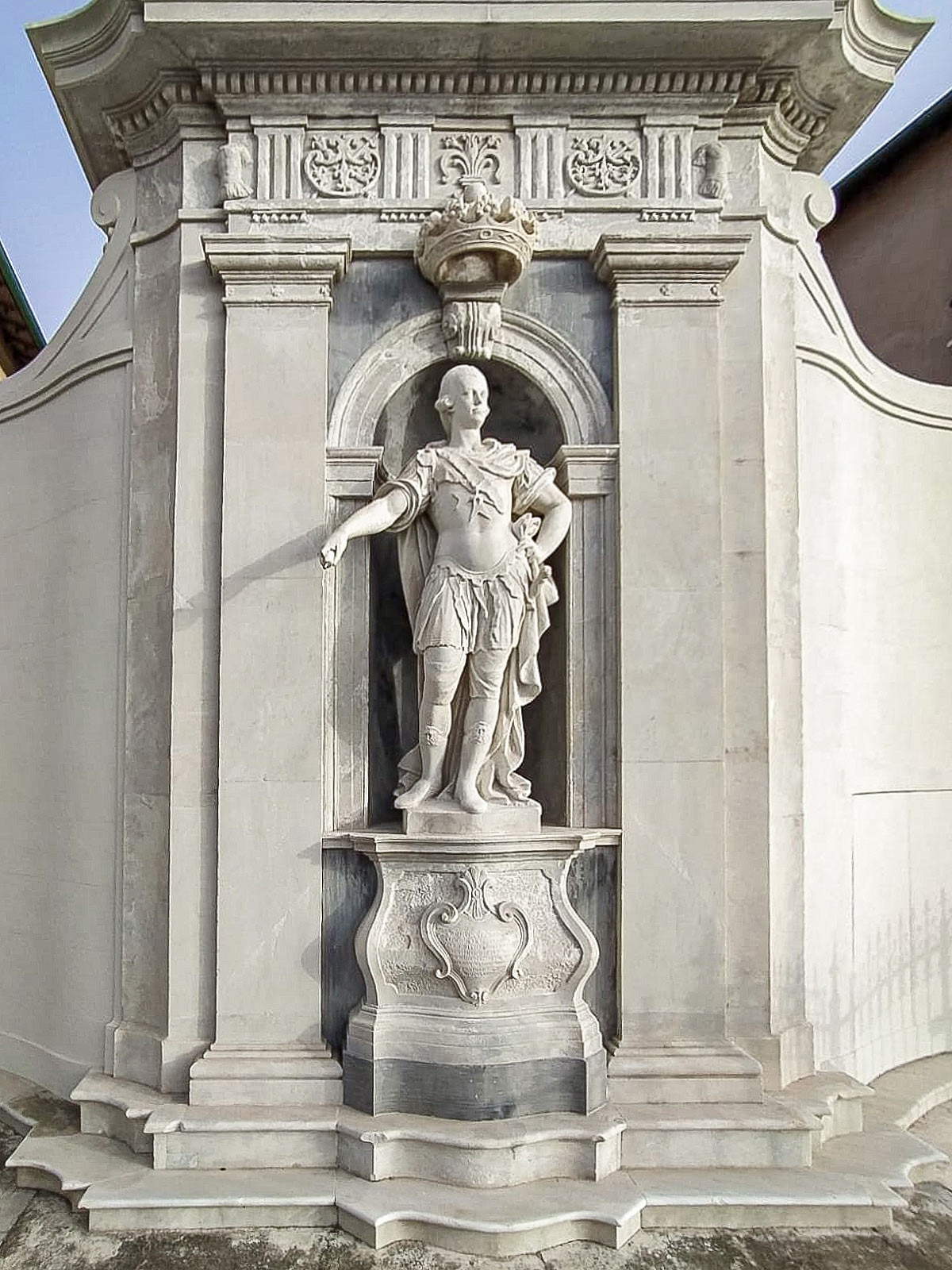

The statue and its ensemble were in fact designed to adorn the lazaretto, which in a port city had a major strategic function in containing the terrible diseases that spread through merchant vessels, allowing crews and goods to observe quarantine on land and not at sea. In particular, St. Leopold’s lazaret inserting itself into the Age of Enlightenment could take advantage of new scientific and technological knowledge to pursue salubriousness.
Certainly its importance did not escape a far-sighted ruler like Peter Leopold, who did his utmost in its successful completion, entrusting the project in 1768 to the military architect Innocenzo Fazzi of Portoferraio. On the building site, attention was also given to the merely aesthetic side by commissioning cycles of frescoes from the artist Giuseppe Maria Terreni, and in 1773 it was also decided to place a marble effigy of the sovereign inside. Architect Fazzi presented to the governor of Livorno and Grand Duke Pietro Leopoldo the design of the niche that would house the monument and also “a delineation in lapis” of the statue that a sculptor selected through an artistic competition was to translate into marble.
Through intermediaries, three artists took part in the competition: the young Belgian sculptor Gilles-Lambert Godecharle (Brussels, 1750 - 1835), “subsidized by the munificence of HRH. Duke Charles of Lorraine, Governor of Austrian Flanders,” thanks to which he practiced at the Academy of Sculpture in Carrara and came to Italy “to execute in marble a statue for the Royal Court of France”; theabbot Giovanni Antonio Cybei (Carrara, 1706 - 1784), the first director of the Academy of Fine Arts in Carrara from 1769 until his death; and Domenico Andrea Pelliccia, who belonged to a well-known family of artists from Carrara but whose biography is still lacking today. The three artists sent their models to Livorno, which, delivered in crates, were inspected by Fazzi. The work of Godecharle, a neoclassical sculptor who would later obtain prestigious commissions even from Napoleon, was rejected because the Belgian did not abide by the commission, producing a work that was showy and brilliant, but judged to be caricatured in some parts. The model by Cybei, who had already worked in Livorno in the church of San Ferdinando under Giovanni Baratta and in Montenero, was also rejected. Instead, Domenico Andrea Pelliccia’s model triumphed, who knew better than his rivals how to stick to Fazzi’s design. In addition to artistic reasons, economic motives probably also concurred: Pelliccia in fact presented a much cheaper estimate than his competitors.
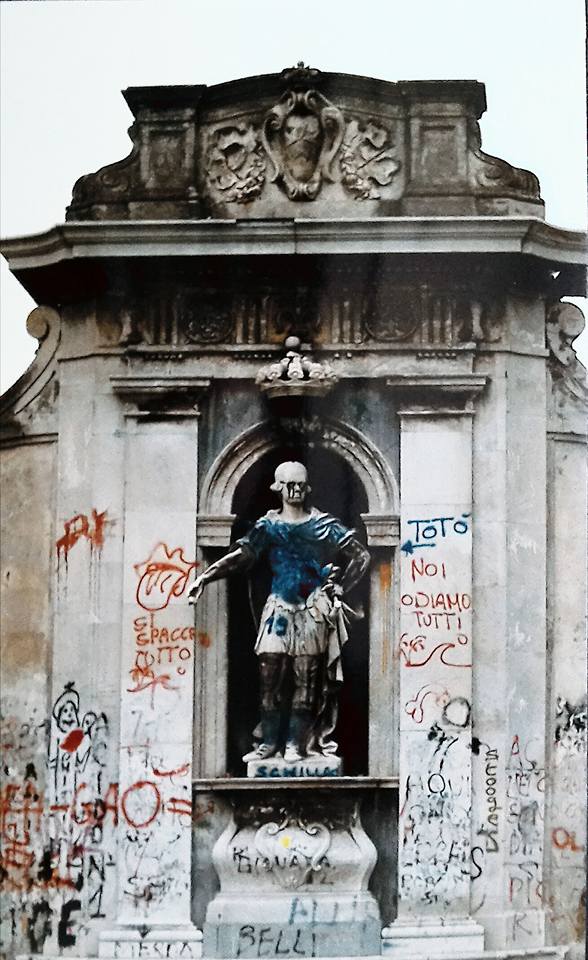
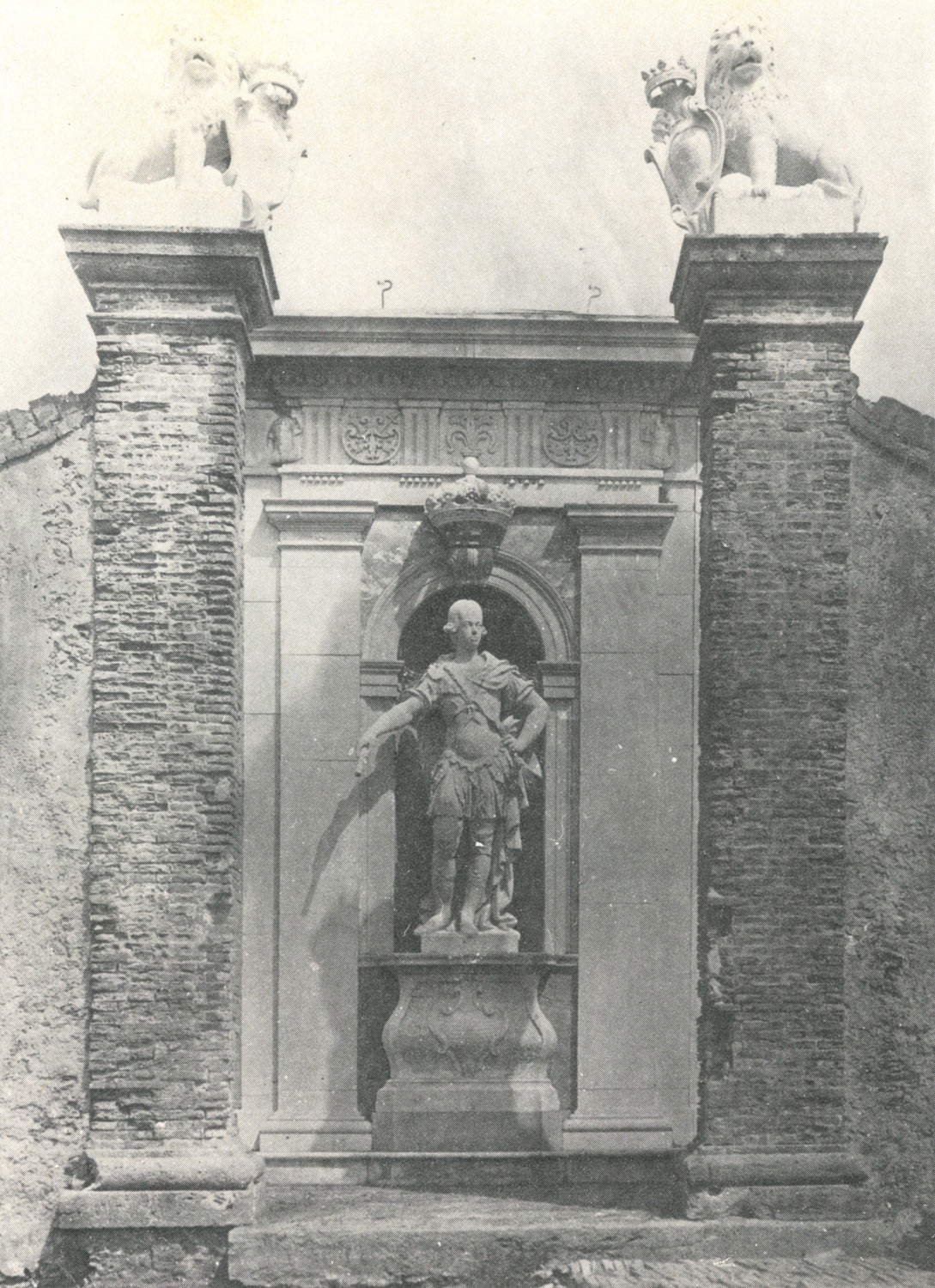

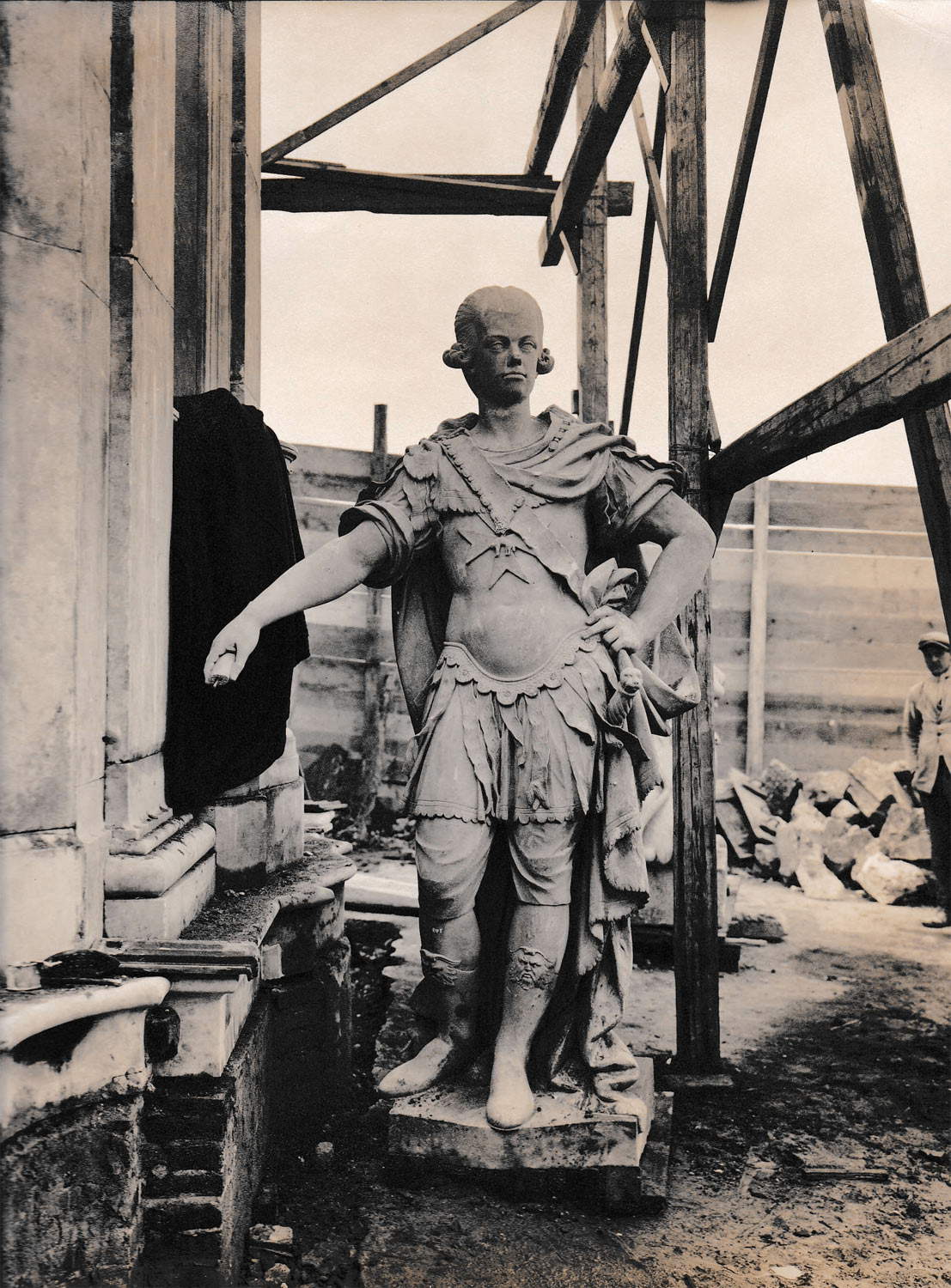
With some delay the work created by Pelliccia arrived by boat to Livorno, where by resorting to the labor of slaves residing in the Bagno dei Forzati, it was finally hoisted into its niche in 1776. Here, within the spaces of the lazzeretto it remained for over a century until the structure changed functions to later house the newly founded Naval Academy. In the 19th century, the statue and its niche were relocated to San Jacopo Square where they remain today.
Unfortunately, the work placed a few steps from the sea is exposed to the weather and the incessant wear and tear of the brackish, causing a situation of severe degradation that impairs its reading. Fortunately, the providential work of benevolent citizens formed in the committee "The Forgotten Jewel" has raised through subscription about 20,000 euros to support the costs of restoration. Thus, the major construction site that was completed in the early months of 2021 restored the statue and its ensemble to a fair level of readability thanks to painstaking cleaning work that removed the salt encrustations and plastering from previous interventions, and integrated the numerous gaps that compromised its figurative component.
The restoration was also accompanied by a slim publication, The Statue of Pietro Leopoldo in Livorno - The Meaning of a Restoration, sponsored by the Livorno Foundation and edited by Stefania Fraddanni with essays by Lucia Niccolini, restorer Irene Giovacchini and a contribution by the author of this article. With this tool a first step has been taken in the process of rediscovering this important work and its author, Domenico Andrea Pelliccia, about whom until now studies had been absolutely parks, except for a few rare pages written by scholar Roberta Roani with some attributions to the Carrarese. The volume also included some happy insights by Andrea Fusani, a leading expert on Antonio Cybei, for whose exhibition he also curated the appendix devoted precisely to Domenico Andrea Pelliccia, whose busts some attributed to him were exhibited, bringing him back into the Cybei fold, with whom Pelliccia perhaps trained or collaborated in different contexts and of whom he was not solely an antagonist in the Livorno competition. The Carrara exhibition also featured two terracotta works that probably have a direct relationship to the Livorno monument: a full figure and a bust, both depicting Grand Duke Pietro Leopoldo that are preserved in the Certosa di Calci, near Pisa.
It was Roberta Roani who identified the two works, attributing them to Pelliccia, although she discarded the hypothesis that the full figure of the sovereign might have been the sketch of the Livorno monument, from which it differs in part in the pose and choice of clothing. Instead, Fusani is credited with the intuition that the terracotta bust could be the essay offered by Pelliccia who arrived in Leghorn to repair the bust delivered broken to the architect Fazzi, while for the small full-figure terracotta the scholar preferred to propose the attribution to the Belgian Godecharle.
Restored to a dignity of its own, today the monument of the grand duke can once again be appreciated in its newfound legibility thanks to which it is possible to admire the virtuosic treatment given to the sovereign’s robes by the artist. Precisely in the robes lies one of the peculiarities of the sculpture: contrary to the solutions favored in the pictorial and numismatic portraiture of the grand duke, where he is eternalized in robes that qualify him as a sovereign or a condottiere, sporting with great prominence the Golden Fleece, the symbol of the ancient knightly order, in the Leghorn statue Peter Leopold is dressed as Grand Master of the Order of the Knights of St. Stephen, recognizable by the eight-pointed cross historiated on his chest.
This is a territorial dynastic body of pontifical right, founded by Grand Duke Cosimo I de’ Medici and approved in 1561 by papal bull by Pope Pius IV. A “crown” order, whose magisterium rests with the Grand Duke of Tuscany and which long assumed the function of the Tuscan navy, with commitments in the fight against piracy. The solution of representing the Grand Duke in such a guise therefore had to meet functional criteria.
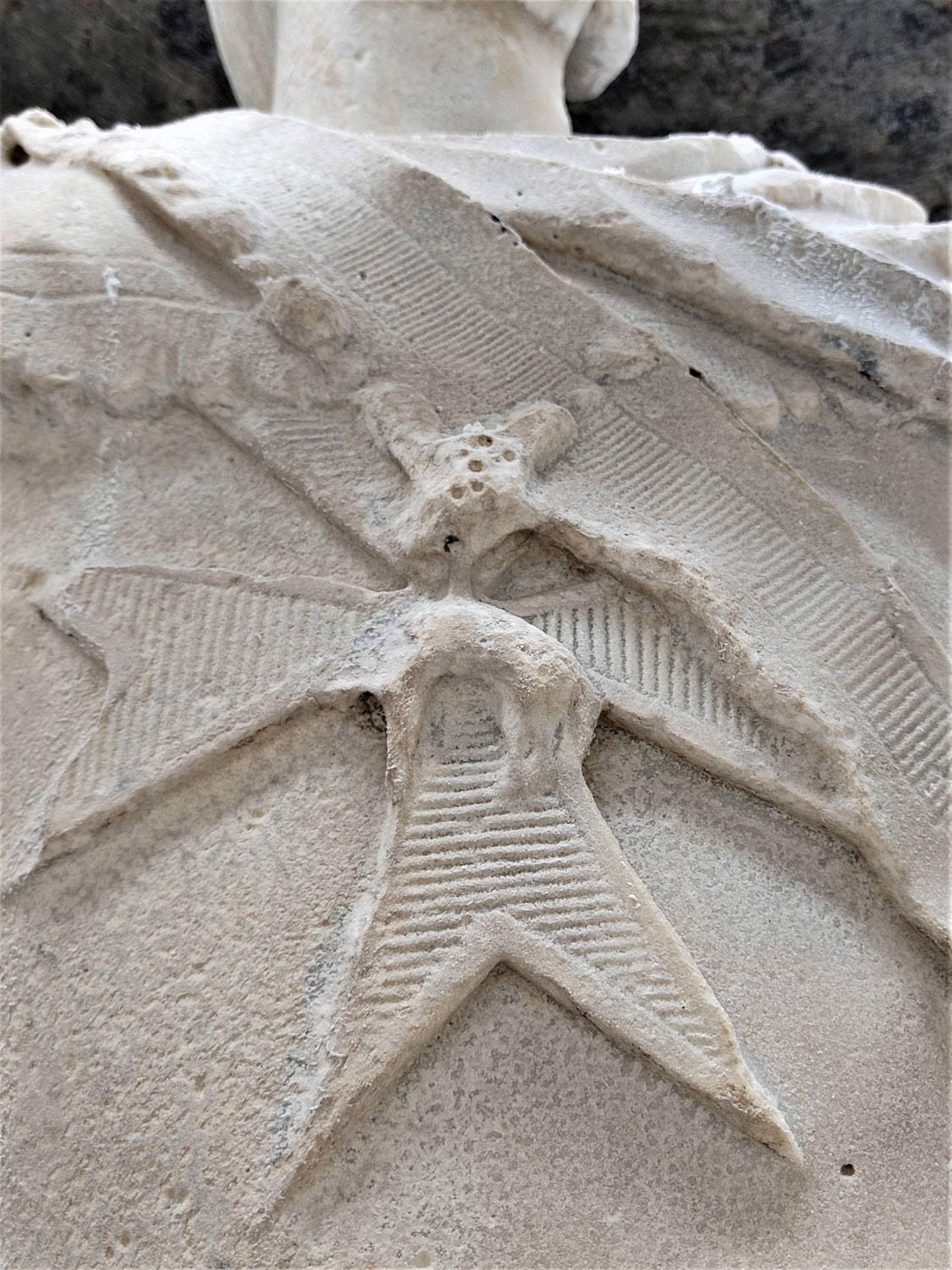
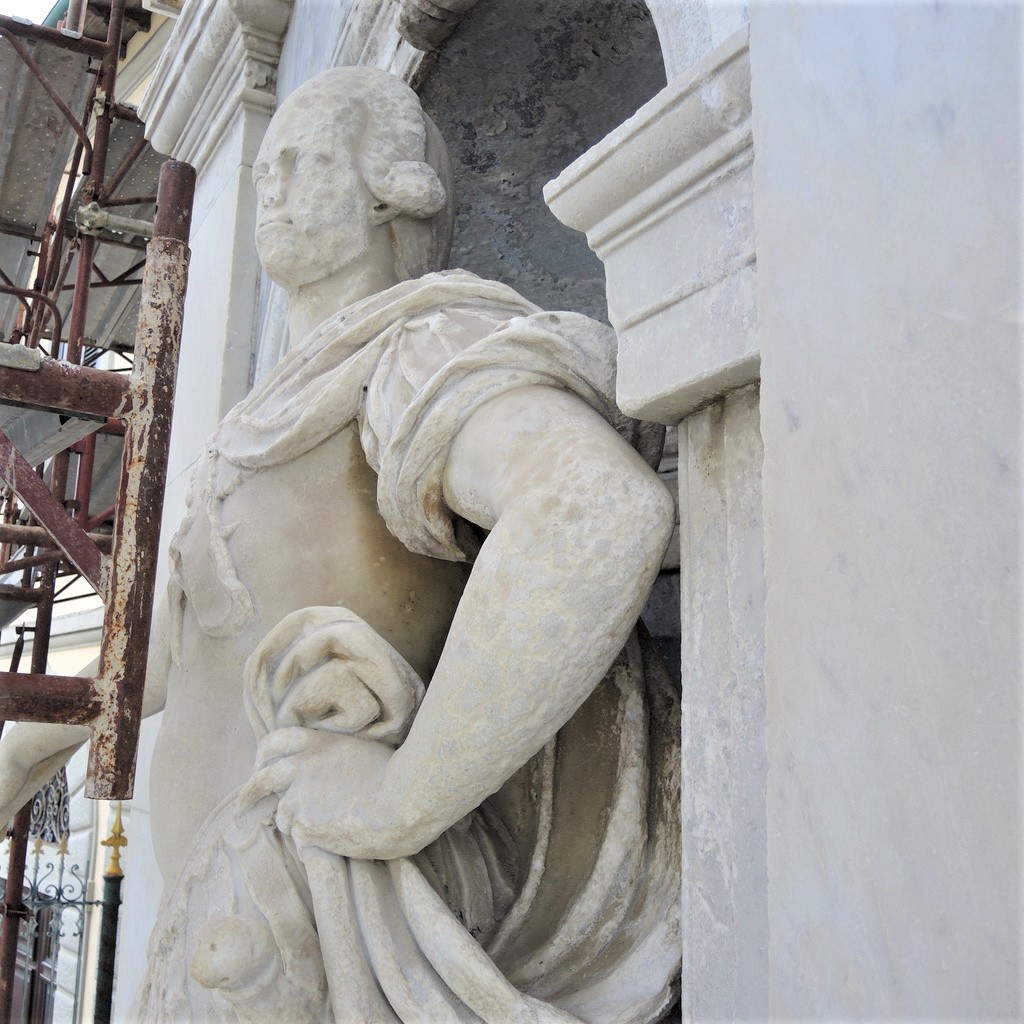

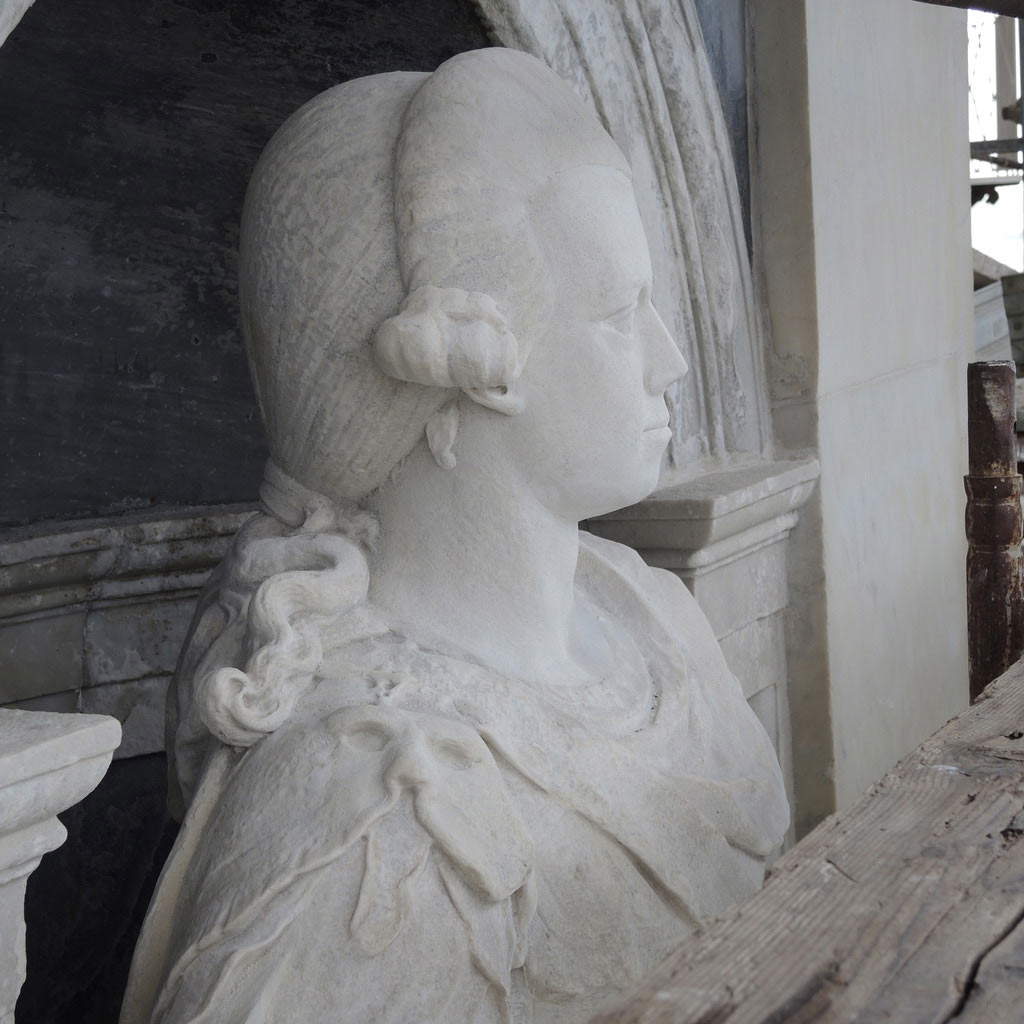
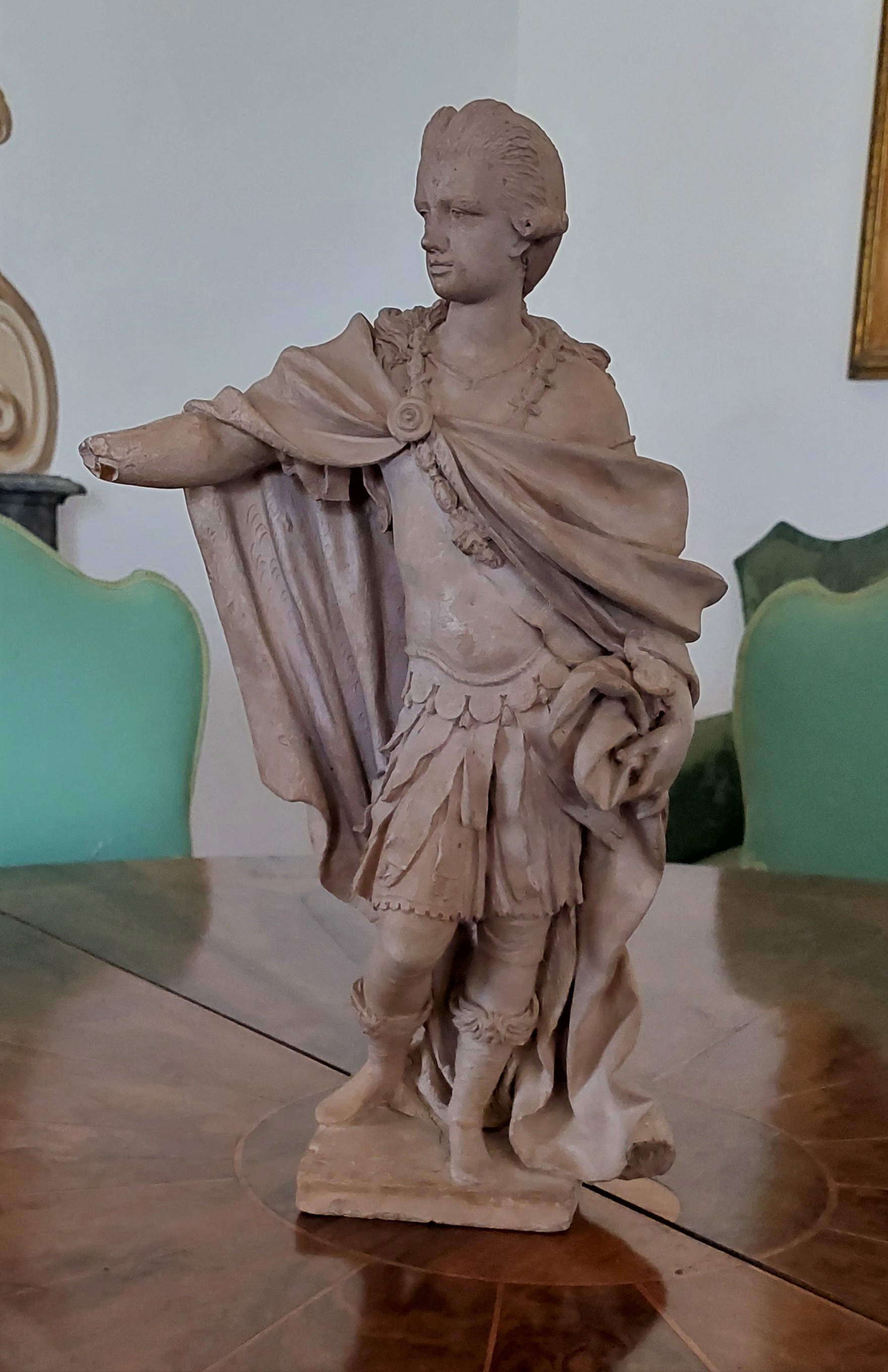

Undoubtedly, both the artist who made the sculpture and the patrons must have had well in mind the other grand ducal monument in Livorno, the famous sculptural complex of the Four Moors. Here, Ferdinand I celebrates his rule and his commitment to fighting the piracy that plagued the Tuscan coast, having Giovanni Bandini effigy himself in the very robes of the Grand Master of the Order of the Knights of St. Stephen, sporting the cross on his chest. The placement itself on the old dock was in response to the need for the display of grand ducal power and the celebration of such achievements, in a particularly strategic place, since it was affected by the constant coming and going of patrons, merchants and sailors of all nationalities.
The statue of Peter Leopold, stands in continuity with the monument of the Four Moors: both because in both they opted to represent the sovereign as commander of the Order, and because they decided to do so with placements near the sea, where that Order found its primary reason for activity, moreover, they chose points affected by commercial and port traffic and therefore traversed by Italian and international frequenters. Pietro Leopoldo had himself eternalized in a place of passage, but also of rest, where in fact some travelers were forced to spend a long time to submit to hygienic regulations and quarantine procedures, and where they would be able to admire all the great munificence of the grand duke, who had allowed the construction of a place symbolic of great progress such as the lazzeretto, equipped with advanced hygienic standards, comfort and no less attention to the aesthetic side. For the same reason it had been decided to name such a construction after Saint Leopold, the Grand Duke’s namesake.
But perhaps other motives also insisted: perhaps the statue was also to celebrate some special event beyond the erection of the lazzeretto. Indeed, it is not clear whether the sculpture of the grand duke clutches the staff of command in his right hand, or a scroll, just as in the statue of Ferdinand I. If it is the latter, it could perhaps have something to do with the reform of the Order of St. Stephen brought about in those very years by Pietro Leopoldo, starting with the motu proprio of August 20, 1775, to transform the Order, deprived of its military function, into an institution for the training of the ruling class. And perhaps the San Jacopo monument responded precisely in this regard to enhance the sovereign’s new policies.
After all, in Livorno, the grand ducal government had always linked its propaganda interests to the magisterium of the Order of St. Stephen, so strategic in its policies. Further proof of this is the 19th-century drawing preserved in the Labronica Library by the sculptor Paolo Emilio Demi depicting the monument in honor of Grand Duke Leopold II to be erected in Piazza della Repubblica, later made in a different form, in which the sovereign is dressed precisely in the robes of Grand Master of the Order, like his predecessors Ferdinand I and Peter Leopold.
Warning: the translation into English of the original Italian article was created using automatic tools. We undertake to review all articles, but we do not guarantee the total absence of inaccuracies in the translation due to the program. You can find the original by clicking on the ITA button. If you find any mistake,please contact us.